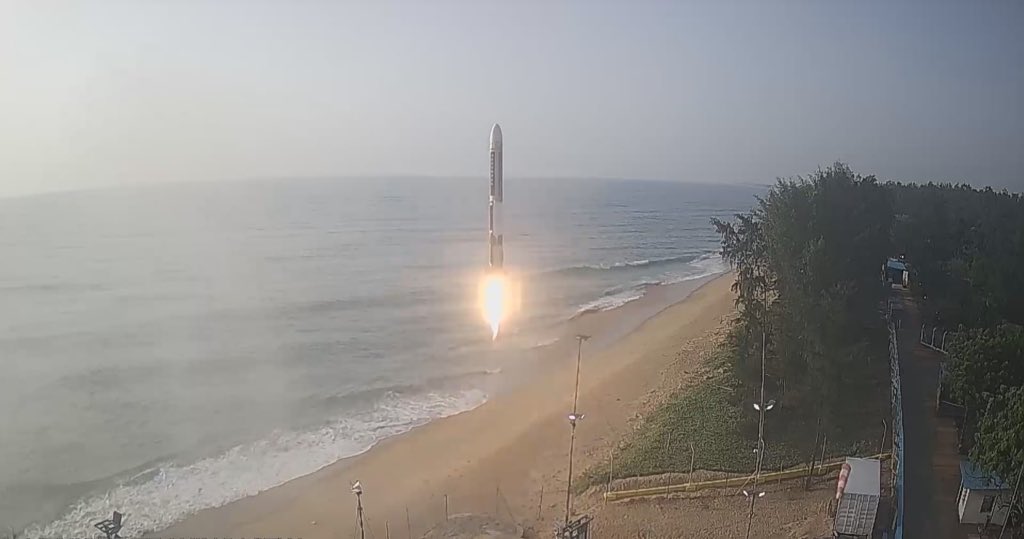
Photo:@IISS_org, X
SINGAPORE (PTI): India has increased its focus on regional defence diplomacy, engagement and issue-based partnerships, says a report released on Friday at the start of the Shangri-La Dialogue here.
India’s expanding defence role and partnerships will likely further contribute to the increasingly competitive nature of India-China relations, said the report by the London-based International Institute for Strategic Studies (IISS).
It is already the case that should India-China relations deteriorate further, the region could find itself increasingly polarised between the two regional powers, with defence relationships growing even more exclusionary.
The status of the preferred security partner carries risks and challenges alongside defence-specific benefits for regional recipients, said the report Asia-Pacific Regional Security Assessment (APRSA).
India will, nevertheless, choose to become increasingly anchored in the Asia-Pacific, added the report.
Taken together, India views combined military exercises with regional partners as a useful tool to not only improve cooperation but also grow their comfort level with New Delhi and simultaneously challenge China’s regional posture, the report elaborated.
India thus conducts a wide array of combined military exercises.
Bilaterally, these include air force, army and naval exercises, as well as, tri-service exercises, along with a supplementary category of maritime-partnership exercises, conducted on the sidelines of Indian Navy port calls to other countries.
Additionally, the Indian military increasingly participates in trilateral, bilateral and multilateral exercises with Asia-Pacific militaries.
The Indian military conducted a total of 75 combined military exercises with partner countries in 2023, the report pointed out. This included 55 bilateral, 16 multilateral and four multilateral exercises.
This trend continued the year-on-year increase of 45 exercises conducted in 2022, 39 in 2021, 29 in 2019, and 40 in 2018.
As India has sought to substantially grow its regional presence, it has aimed to increase the number of exercise partner countries and develop new formats.
In 2023, India’s military exercises in the Asia-Pacific included their first naval exercises with the Royal Thai Navy, with ASEAN and European Union member-state naval assets, and the first India–Indonesia–Australia and India–France–UAE maritime-partnership exercises.
The growing frequency of India’s combined exercises and presence in the Indian Ocean and in Southeast Asia demonstrates the Indian Navy’s priority to strengthen defence relations within these regions.
In 2023, India’s military exercised with a large group of countries, ranging from Australia to the Maldives, the US and Vietnam, demonstrating the wide focus of India’s Asia-Pacific military engagement.
New Delhi views each of these countries as key regional defence partners, with the attendant military exercises improving cooperation with these nations, said the report.
The Indian Navy also uses port calls to display its presence, often though not exclusively as an ancillary to the military exercises.
As with the exercises, the Indian Navy made significantly more port calls in 2023 – 51 – compared to 39 in 2022, 24 in 2021 and 25 in 2019.
India’s port calls in 2023 took place primarily in the Indian Ocean and Pacific Ocean islands and littoral countries, highlighting New Delhi’s targeted display of its presence.
Notably, as New Delhi has become more willing to take risks in its Southeast Asia and Asia-Pacific policies, it has increased what used to be seen as ‘sensitive’ defence engagements such as submarine visits.
This included the first deployment of an Indian submarine to Australia in August 2023, following the first visit by an Indian submarine to Indonesia in February 2023.
An Indian submarine also visited Singapore as part of the Singapore–India Maritime Bilateral Exercise (SIMBEX) in September 2023, the report highlighted.
With China’s growing activity in the Indian Ocean, India has also conducted joint patrols with Australia and France and increased cooperation with both on maritime including their first naval exercises with the Royal Thai Navy, as well as with ASEAN and European Union member-state naval assets, and the first India–Indonesia–Australia and India–France–UAE maritime-partnership exercises.
The growing frequency of India’s combined exercises and presence in the Indian Ocean and Southeast Asia demonstrates the Indian Navy’s priority to strengthen defence relations within these regions.
India’s growing defence role and partnerships in the Asia-Pacific have broader implications for regional security. Its growing engagement with Australia, Japan and the US, both bilaterally and mini-laterally, alongside states in the Indian Ocean region and Southeast Asia, highlights a growing regional divide between India and China.
The Indian foreign policy and security tilt towards the US and its allies and partners will continue, and as US-China tensions worsen, the India–US engagement will likely add more fuel to the competitive India–China fire.
The main security concern for India is if China increases its defence engagement with India’s neighbouring countries, according to the report.
India wants to be the primary security and defence partner in the Indian Ocean region, and it will seek to prevent China from operating regularly with its neighbours.
For New Delhi to prevent this, it will need to become the preferred regional security partner, said the report.
 Previous Article
Previous Article Next Article
Next Article












The Indian Air Force, in its flight trials evaluation report submitted before the Defence Ministry l..
view articleAn insight into the Medium Multi-Role Combat Aircraft competition...
view articleSky enthusiasts can now spot the International Space Station (ISS) commanded by Indian-American astr..
view article